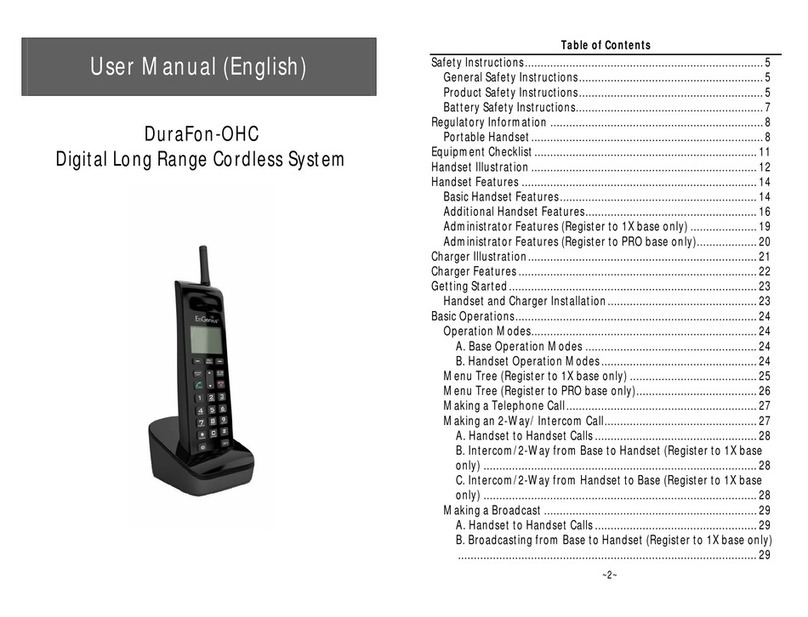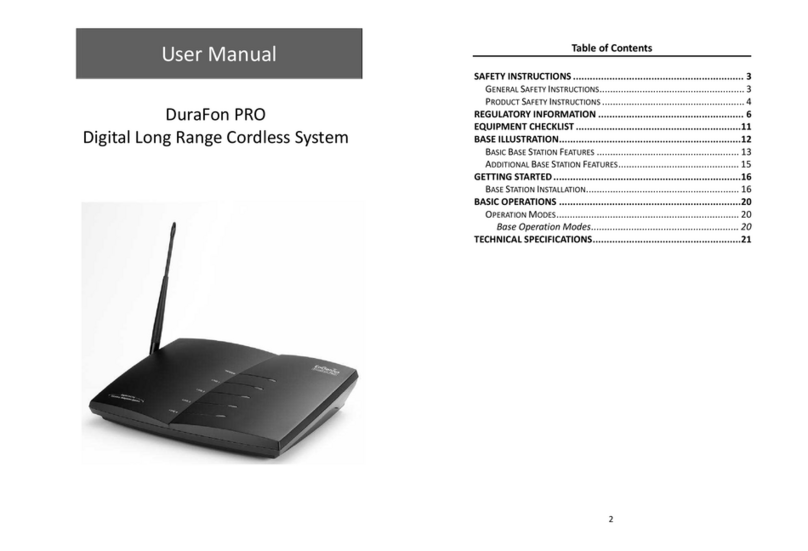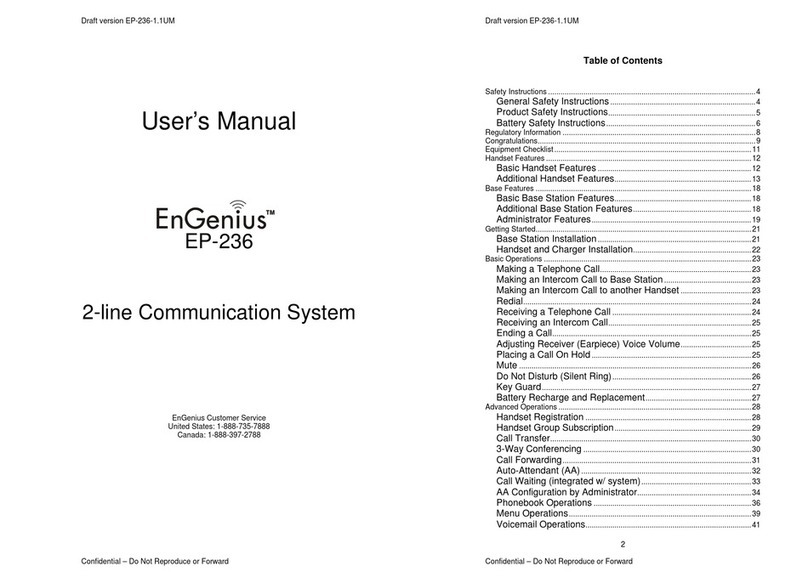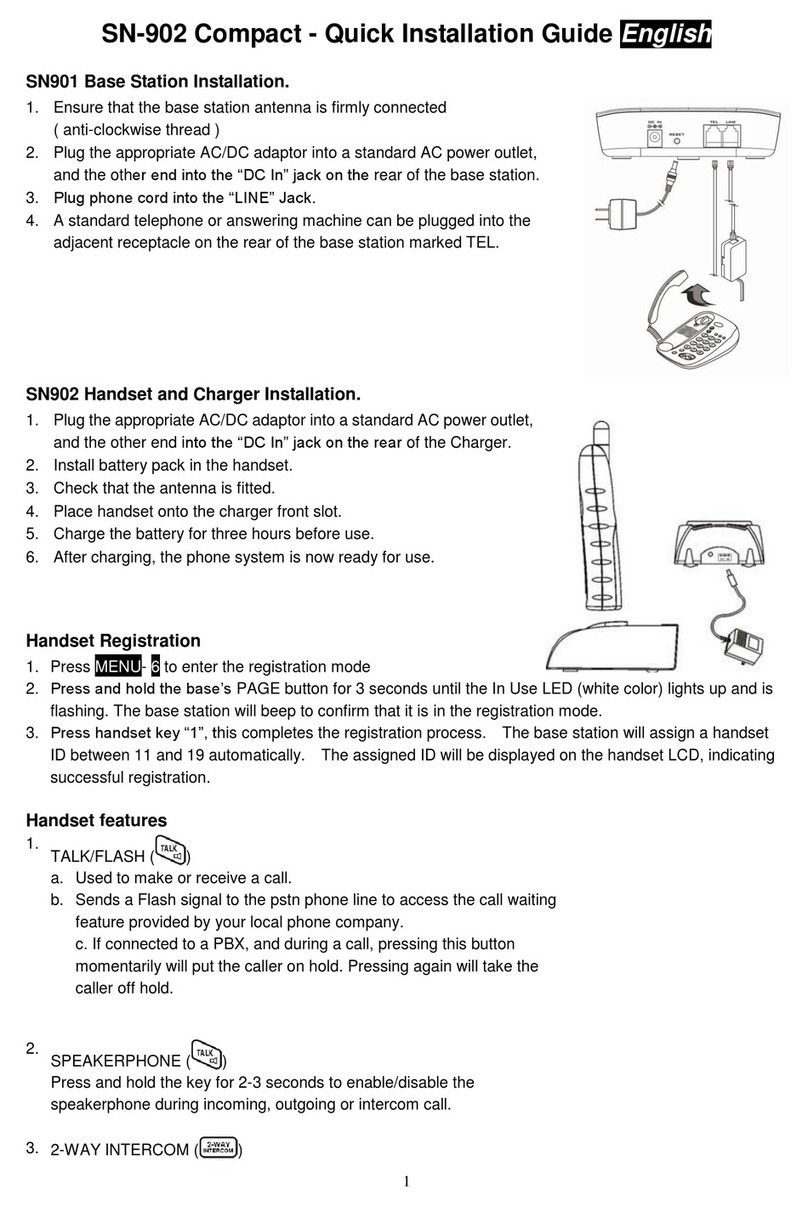Safety Instructions 1
General Safety Instructions 1
Product Safety Instructions 2
Battery Safety Instructions 4
Regulatory Information 5
..
Congratulations 7
Equipment Checklist ..8
Handset Illustration ..9
Handset Features 10
Basic Handset Features 10
Additional Handset Features 12
Base Illustration 15
Base Features 16
Basic Base Station Features 16
Additional Base Station Features 17
Administrator Features 18
Charger Illustration 19
Charger Features 20
Getting Started 21
Base Station Installation 21
Handset and Charger Installation 22
Basic Operations 23
Making a Telephone Call 23
Making an Intercom Call 23
Redial 24
Receiving a Telephone Call 24
Receiving an Intercom Call 24
Table of Contents
....................................................
.......................................................
.......................................................
.......................................................
.............................................
......................................................
...............................................
.................................................
....................................................
......................................................
.........................................................
.................................................
....................................................
........................................................
....................................................
..........................................................
...................................................
....................................................
.............................................
...........................................................
.........................................................
.............................................
.........................................................
..........................................................
....................................................................................
.....................................................
......................................................




































